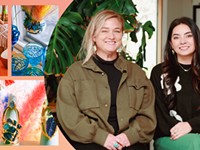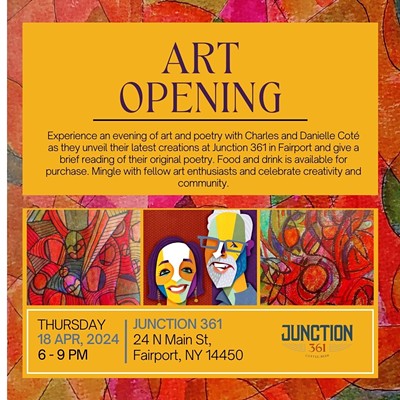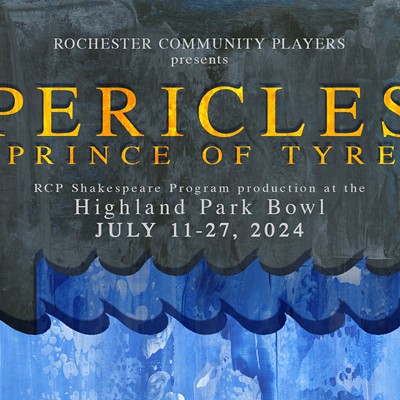[
{
"name": "500x250 Ad",
"insertPoint": "5",
"component": "15667920",
"parentWrapperClass": "",
"requiredCountToDisplay": "1"
}
]
There aren't too many terms that have the ability to disquiet the bourgeois while enlivening the avant-garde, but "modern" or "modernism" can do just that.
To be a modern painter can imply both a commitment to formal innovation and a challenge to the status quo. In this way, modernism in art can range from the mid-19th-century French paintings of Courbet and Manet to the abstract expressions of mid-20th-century Americans like Pollock and DeKooning. But after the dust settles (and a century passes), what emerges is the palpable result of a shared exploration by two halves of the same whole.
It was in the 19th century that scholars and critics began to theorize about the interconnectedness of seeing and knowing, and it wasn't long before French poet Charles Baudelaire added fuel to the fire by contending that artists and writers should rid themselves of classical archetypes and instead, "be of their own time." He wanted artists to grab hold of the experiences of modern life, to capture and recreate the mundane --- men shoveling coal, women tending cows, Notre Dame in the morning light.
Courbet, the de facto father of realism, was so sure this was the new (and necessary) direction of painting that he remarked, "show me an angel, and I will paint one!" But the histories of art conspired to keep the academic separate from the modern. That is until recently, the beginning of a new millennium.
Modern Masters: From Corot to Kandinsky is a small selection of 49 paintings from the Juntos Actuando Collection. Founded in the early 1990s by Juan Antonio Pérez Simón, a Mexican telecommunications executive, Juntos Actuando is a private nonprofit social-service foundation. The Juntos Actuando Collection, which Simón began in the mid-'70s, consists of paintings, drawings, sculptures, prints, and decorative arts from the 15th to 20th centuries. It's recognized as one of the most important collections of European art in Mexico.
All the significant directions in the art of the late 19th and early 20th centuries are here: the outdoor scenes of the Barbizon painters and early Realists (Corot, Millet, and Lhermitte), the idealized subjects and polished surfaces of academic painters and Victorian moralizers (Bouguereau, Gerôme, Moreau, and Tissot), the opening skirmishes of cubism, non-objectivism, and surrealism (Picasso, Dalí, Kandinsky).
More importantly, the exhibition showcases one man's embrace of his past and his passionate search for ideal beauty --- a search rooted in the romance of a distant time and place. Dupré's peasant woman hoists a pitchfork, piling hay which glints and gleams in the waning light of the setting sun while another young woman, a gleaner, pauses to confront the gaze of the viewer. It's as classic and monumental as Bouguereau's Innocence, a picture of mother and child.
The theme of the virginal young beauty, is, in turn, later echoed in Godward's Classical Beauty. It's a credit to Simón's aesthetic that this is not just a collection of blue-chip artists available to the highest bidder. Instead, the collection reflects a consistency of vision, and is a thoughtful and deliberate attempt to renew the experiences of his past, whether they be sounds, smells, and colors, or people and places.
In her catalogue essay, exhibition curator Roxana Velásquez Martinéz Del Campo writes about the impact of the childhood move from Spain to Mexico on the young Juan Antonio, on "departing the land of their ancestors" and about how the "tangible realities of the fields, skies, and sea of Asturias were gone forever."
It's not hard to make a connection between memories of "tangible realities" and the painted or drawn tangibility of gleaners, road menders, and peasants shoveling hay or tying bundles of branches. The artists known for these types of images --- Dupré, Millet, Lhermitte --- immortalized the working-class in ways previously reserved for the elite. Similarly, Boudin, Corot, and Pissarro depicted nature and rural life as they saw it, without any illusions. It shouldn't matter that these particular artists and their versions of rural reality were French. It's the essence of the subject that forges the connection to the collector. (Joaquin Sorolla, a Spanish painter known for his images of the sea, the human figure, and nature, is also well-represented.)
Simón wasn't just drawn to nostalgia but to a passionate love of life and beauty. This sensibility, then, accounts for the juxtaposition of the sentimental and real, the neoclassical and genteel, with the vibrant or surreal. Of the selections included in this exhibition, Picasso, Gris, Dali, Magritte, Chagall, and Kandinsky provide sufficient representation of the "modern" in early 20th-century painting.
While most people will view this work politely from a distance, try standing right in front of the paintings and seeing them for what they are: decorated objects. Viewed up close, the paintings begin to speak a similar language, the language of marks made with paint, like a repository or graveyard of unique human inscriptions. It's like looking at a beautiful manuscript in a foreign language. All of a sudden, a brushstroke in Corot's painting, atmospheric and ephemeral, has a relative in Tissot's L'esthetique au Louvre, a much more concrete or photo-realistic picture.
You can begin to recognize all the paintings as belonging to the same family --- one made by marks on a surface that look unique but similar and, at the same time, describe different things.
Modern Masters: From Corot to Kandinsky is on display at the Memorial Art Gallery, 500 University Avenue, through January 4. Hours: Tuesday and Wednesday 12 to 4 p.m.; Thursday 10 a.m. to 9 p.m.; Friday 10 a.m. to 4 p.m.; Saturday 10 a.m. to 5 p.m., and Sunday 12 to 5 p.m. Closed Mondays. Admission: $7; college students w/ ID and seniors, $5; children 6-18, $2. Free to members, children 5 and under. Reduced admission Thursday, 5 to 9 p.m., $2. Info: 473-7720.
Latest in Art
More by Alex Miokovic
-
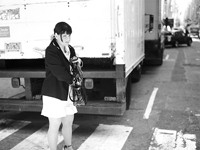
Larry Merrill at M. Early Gallery
Dec 6, 2006 -
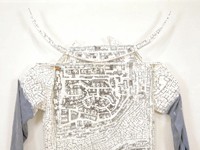
"Kim Jones: A Retrospective"
Nov 29, 2006 -
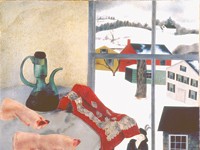
"My America" at the MAG
Nov 8, 2006 - More »
More by Heidi Nickisher
-

Larry Merrill at M. Early Gallery
Dec 6, 2006 -

"Kim Jones: A Retrospective"
Nov 29, 2006 -

"My America" at the MAG
Nov 8, 2006 - More »



